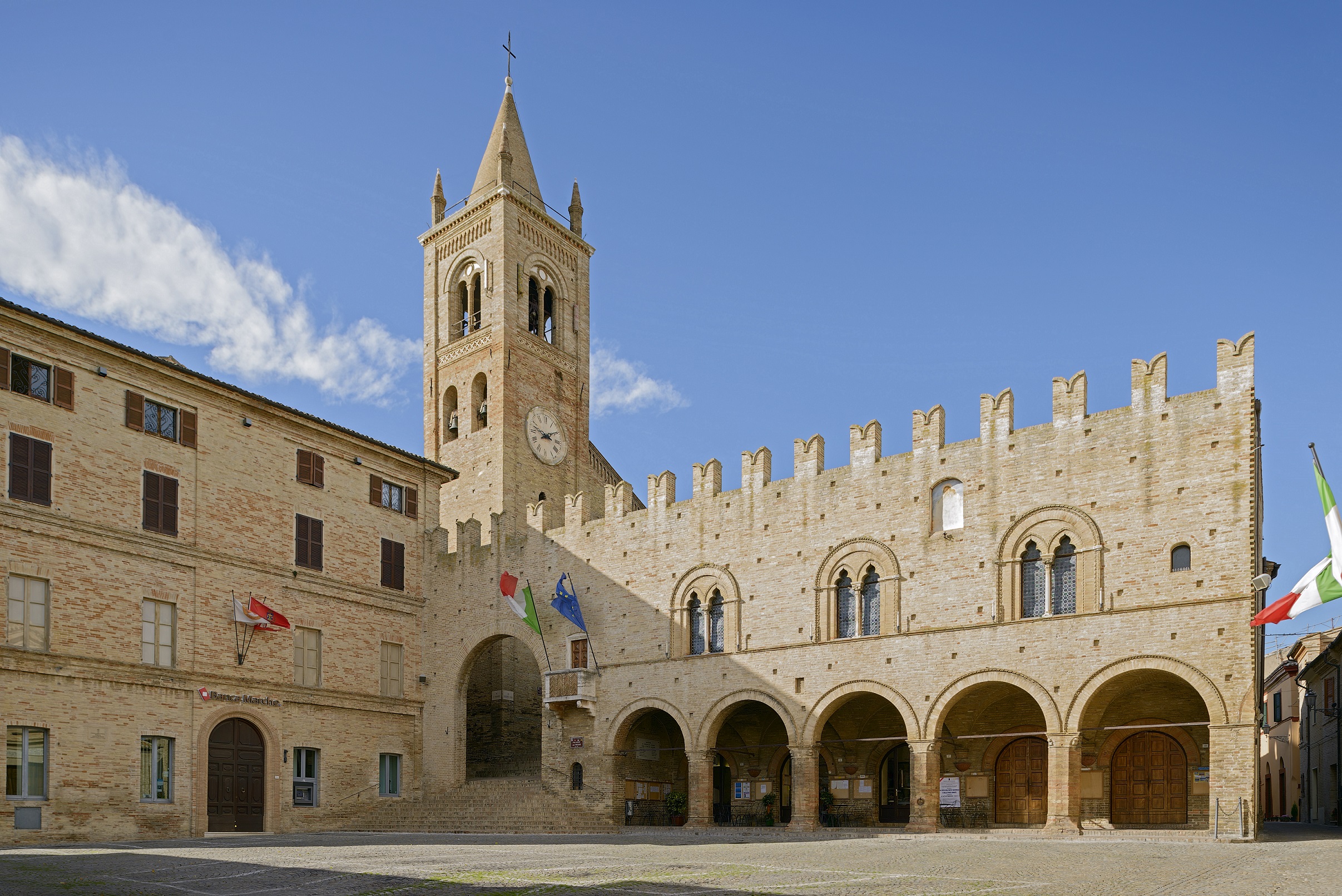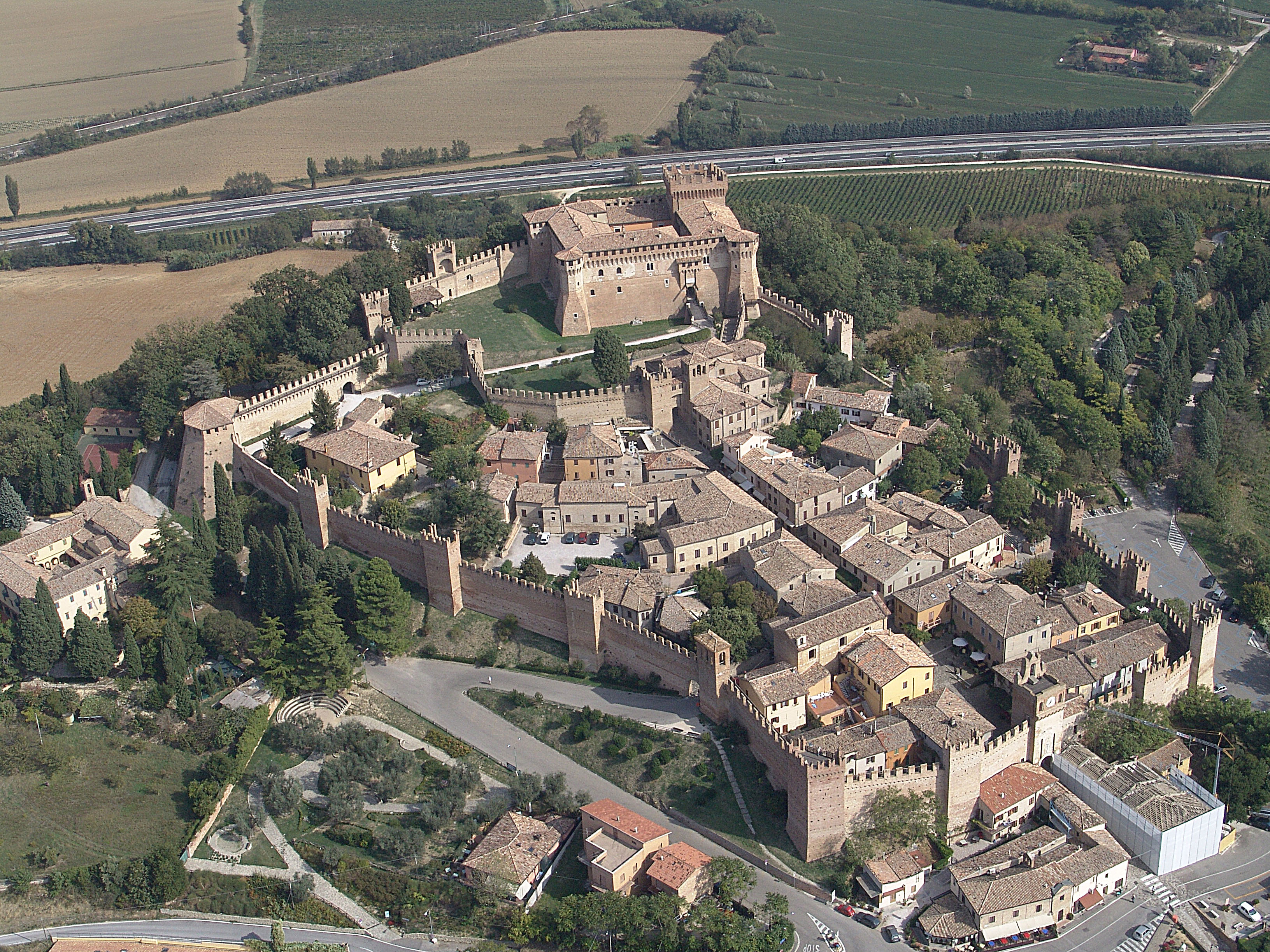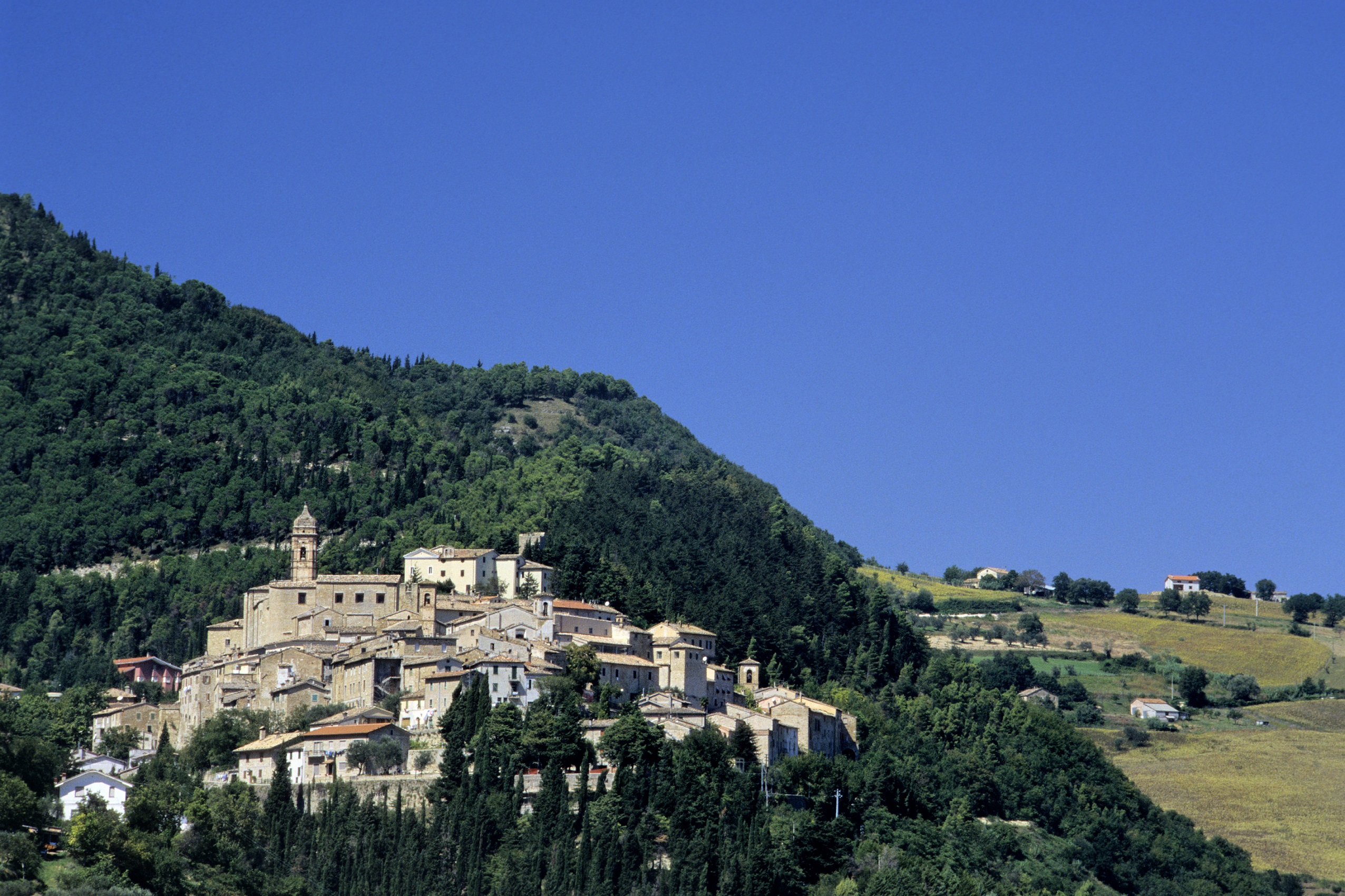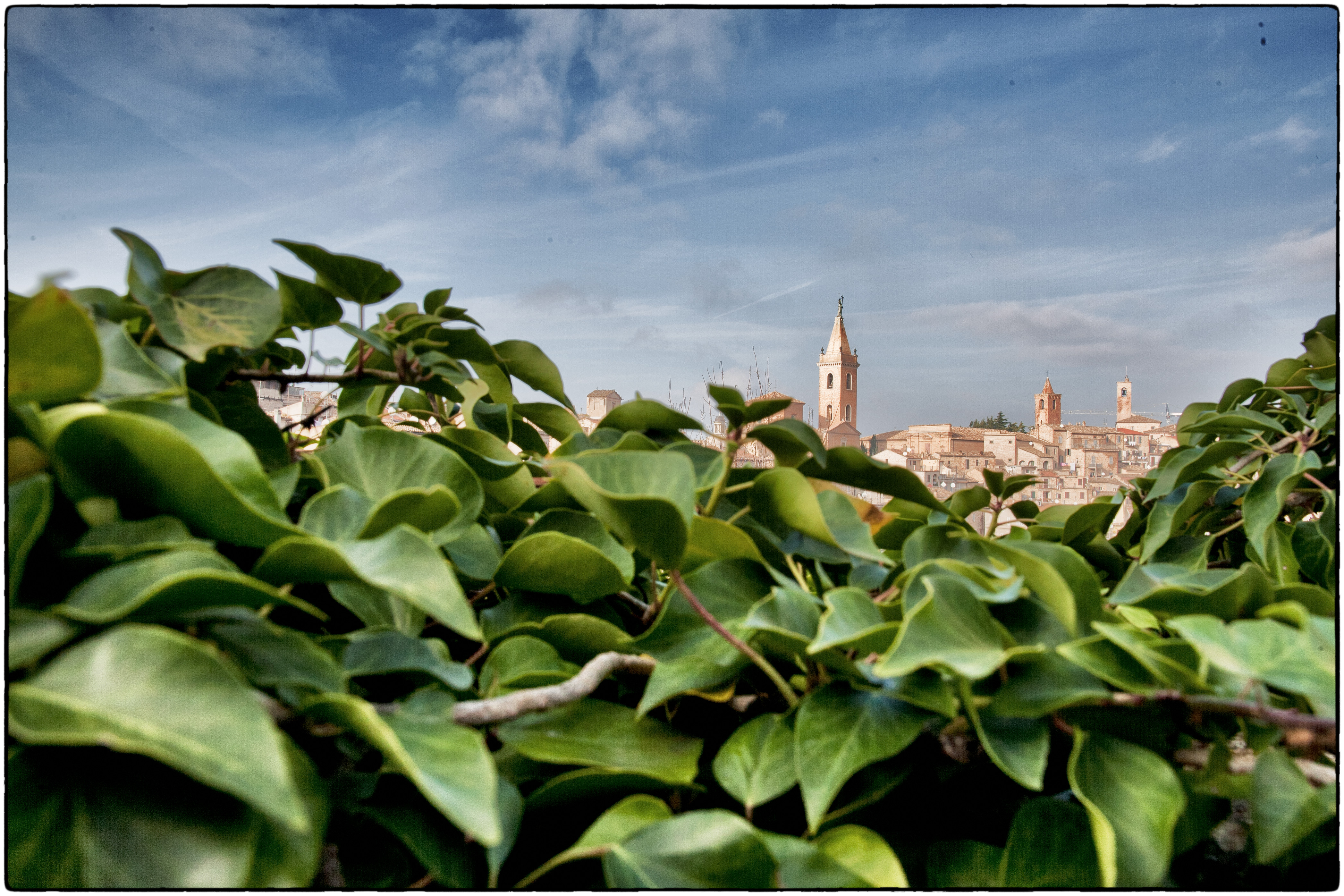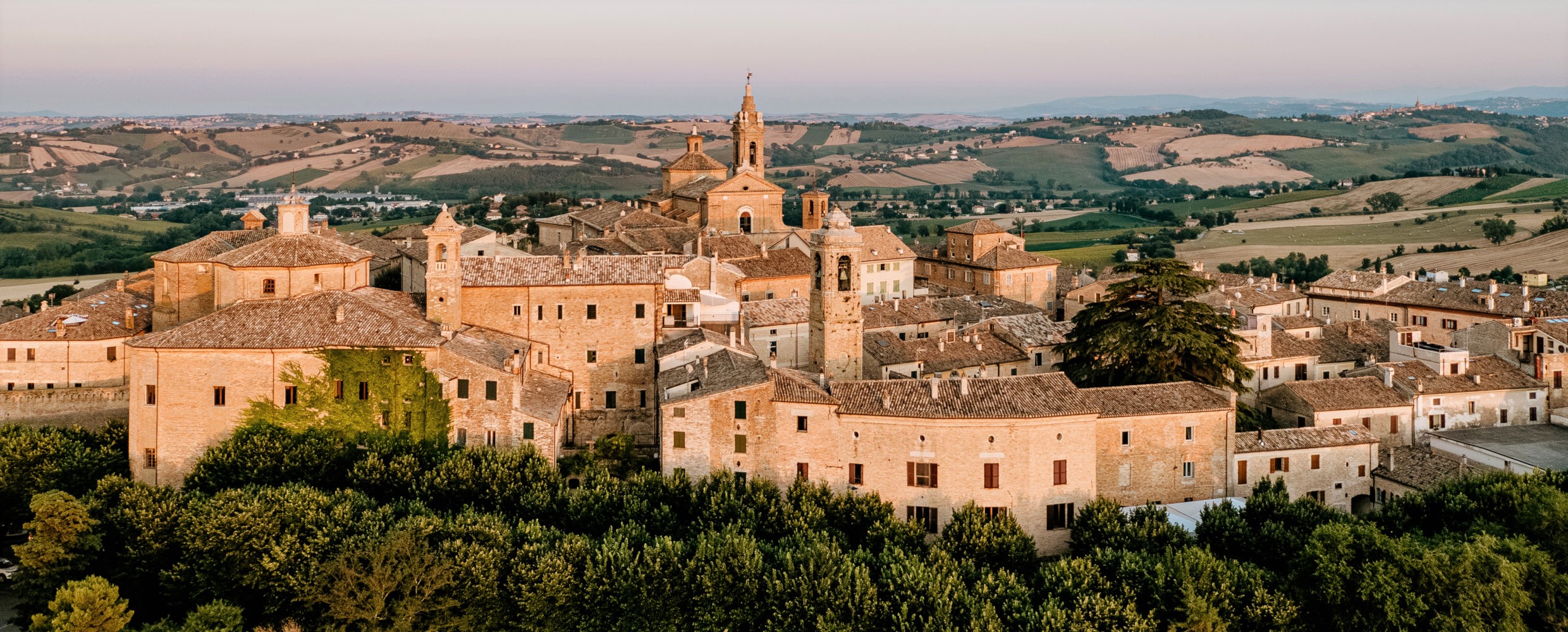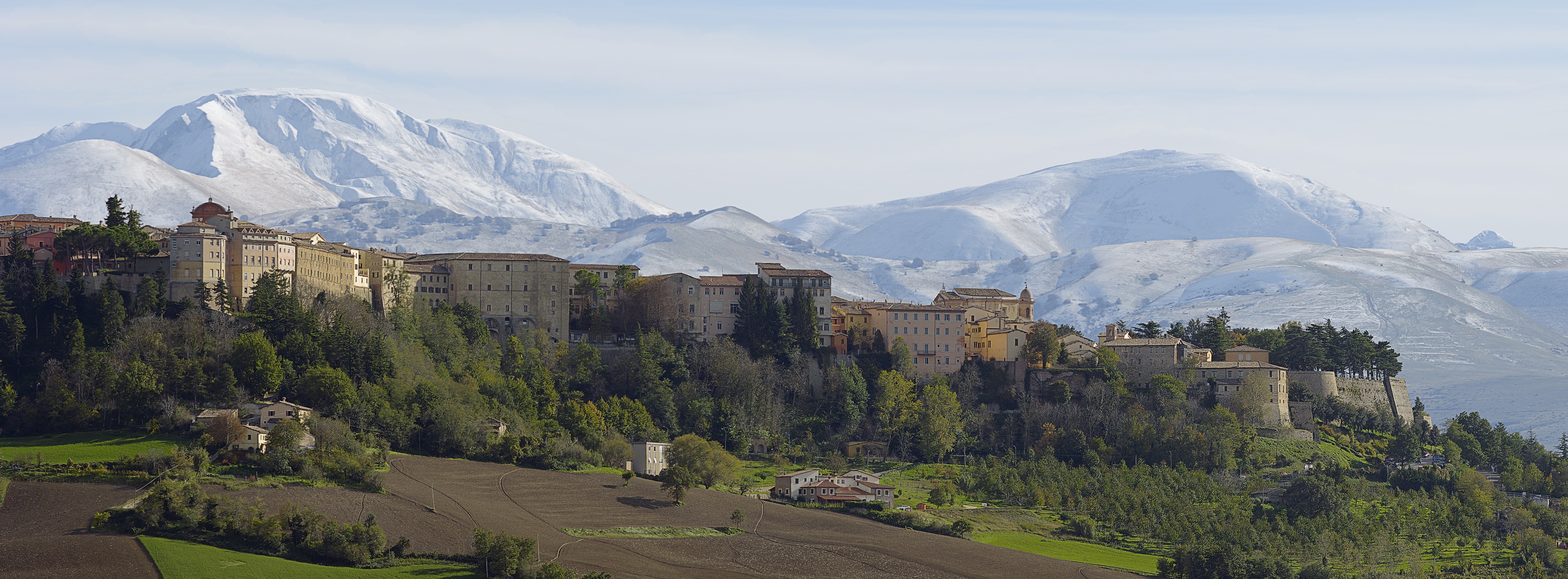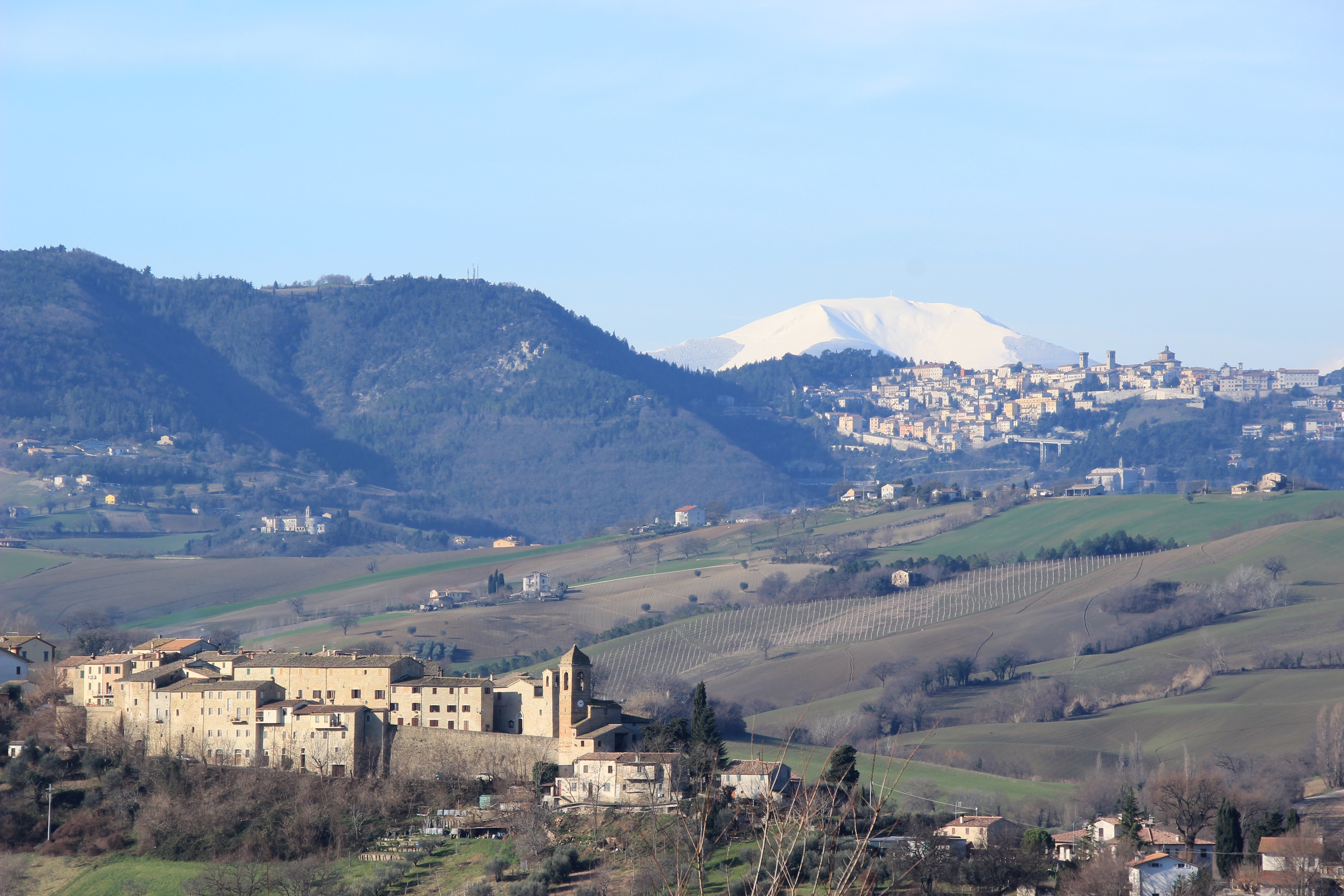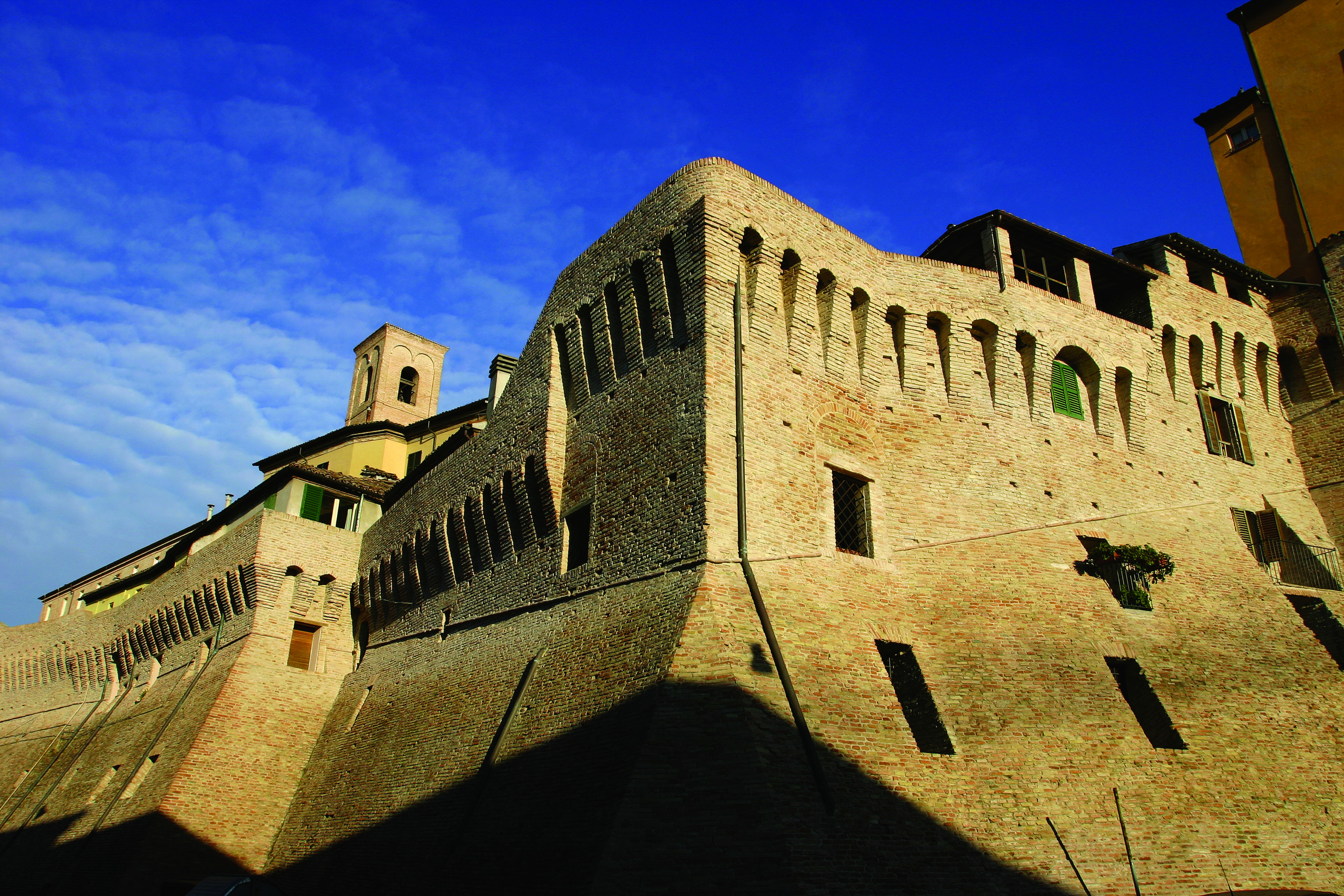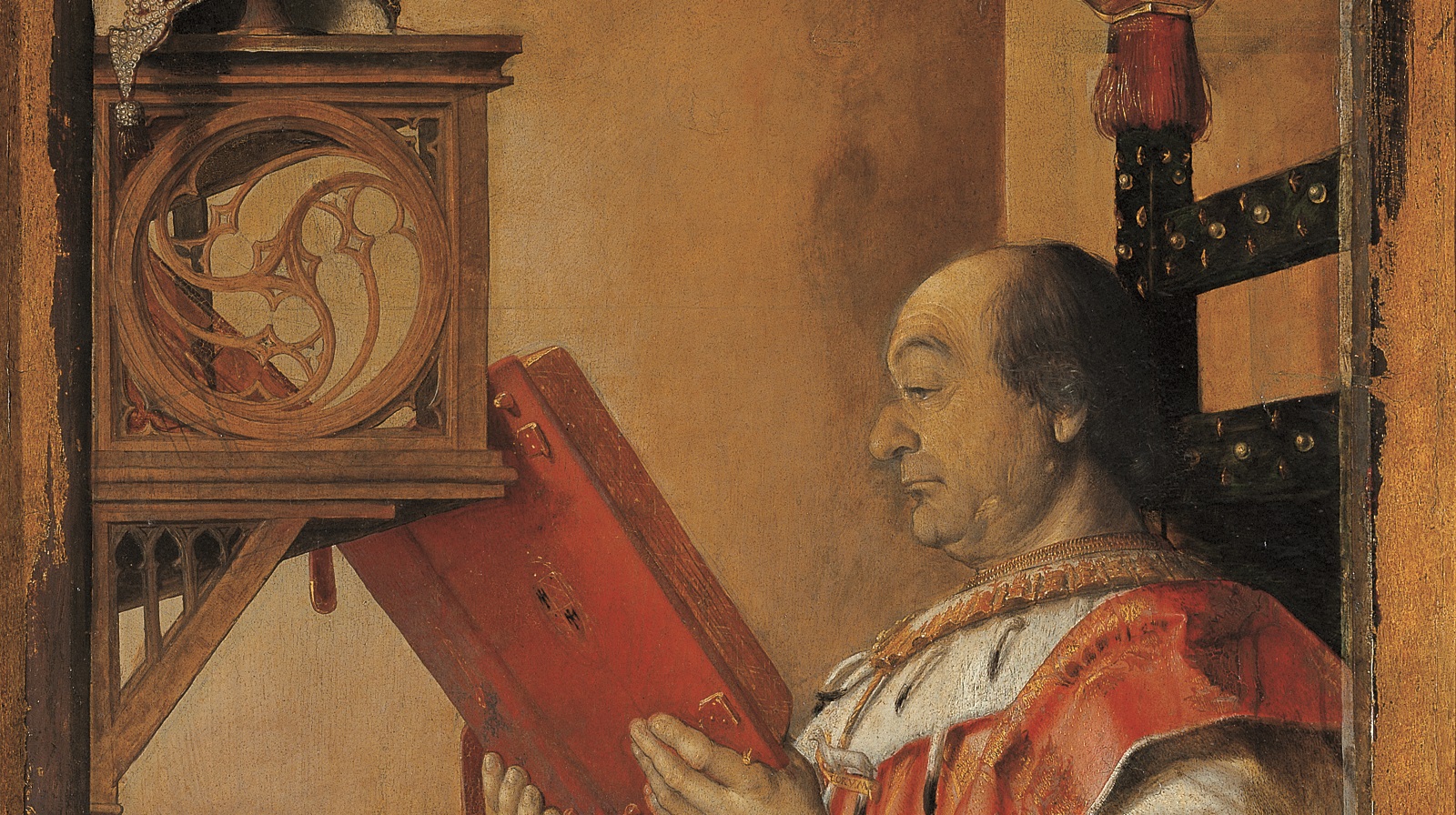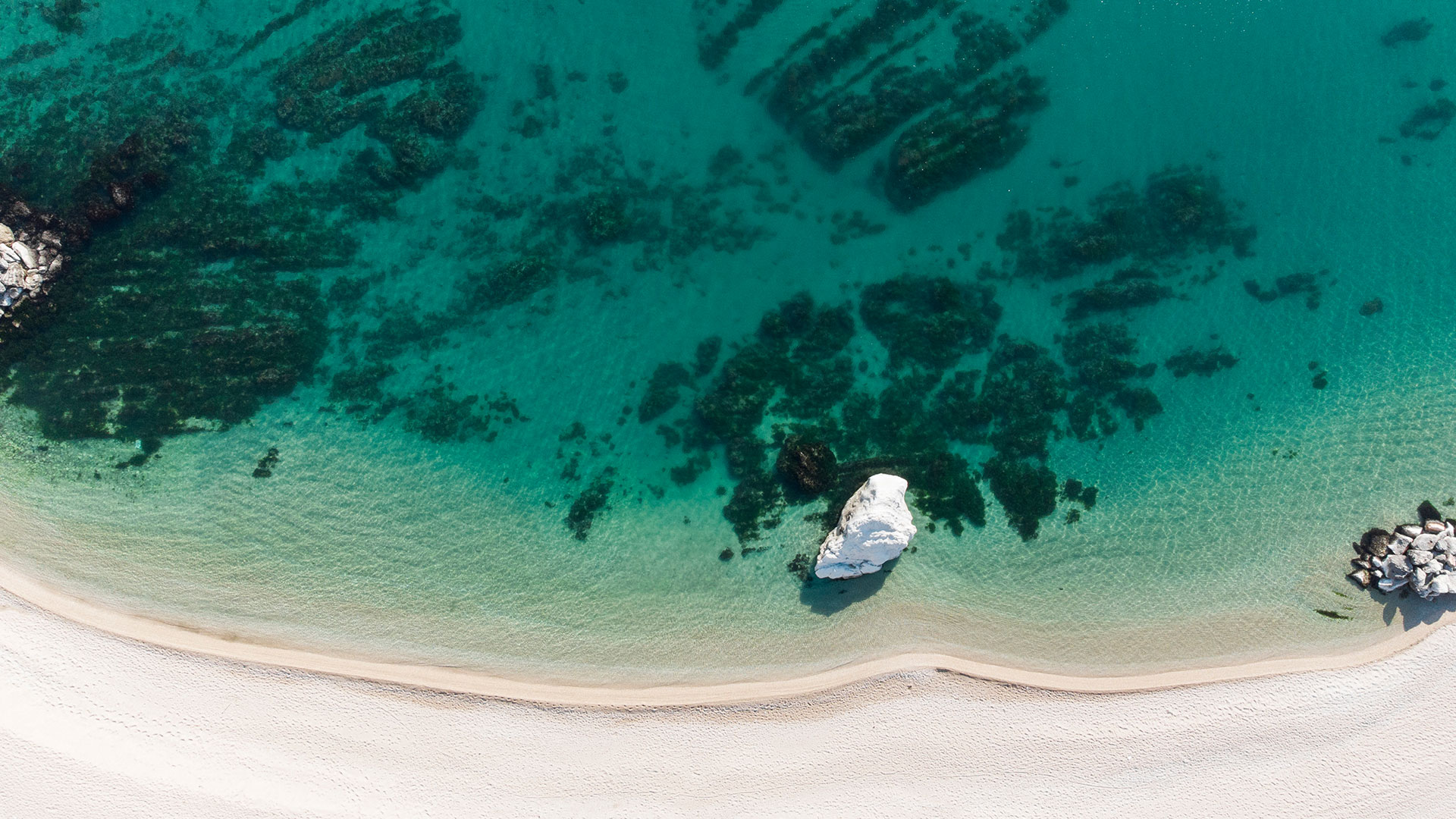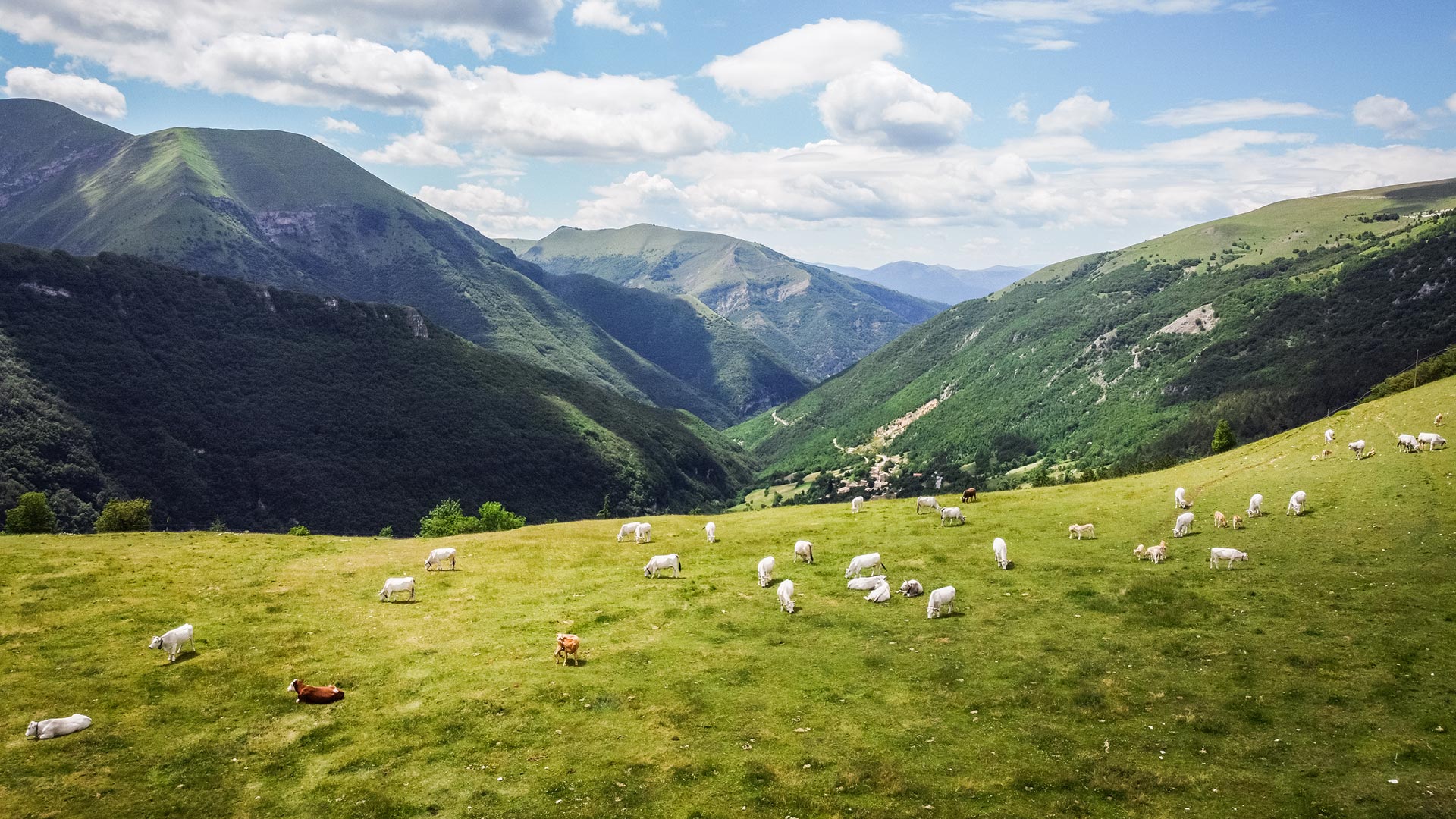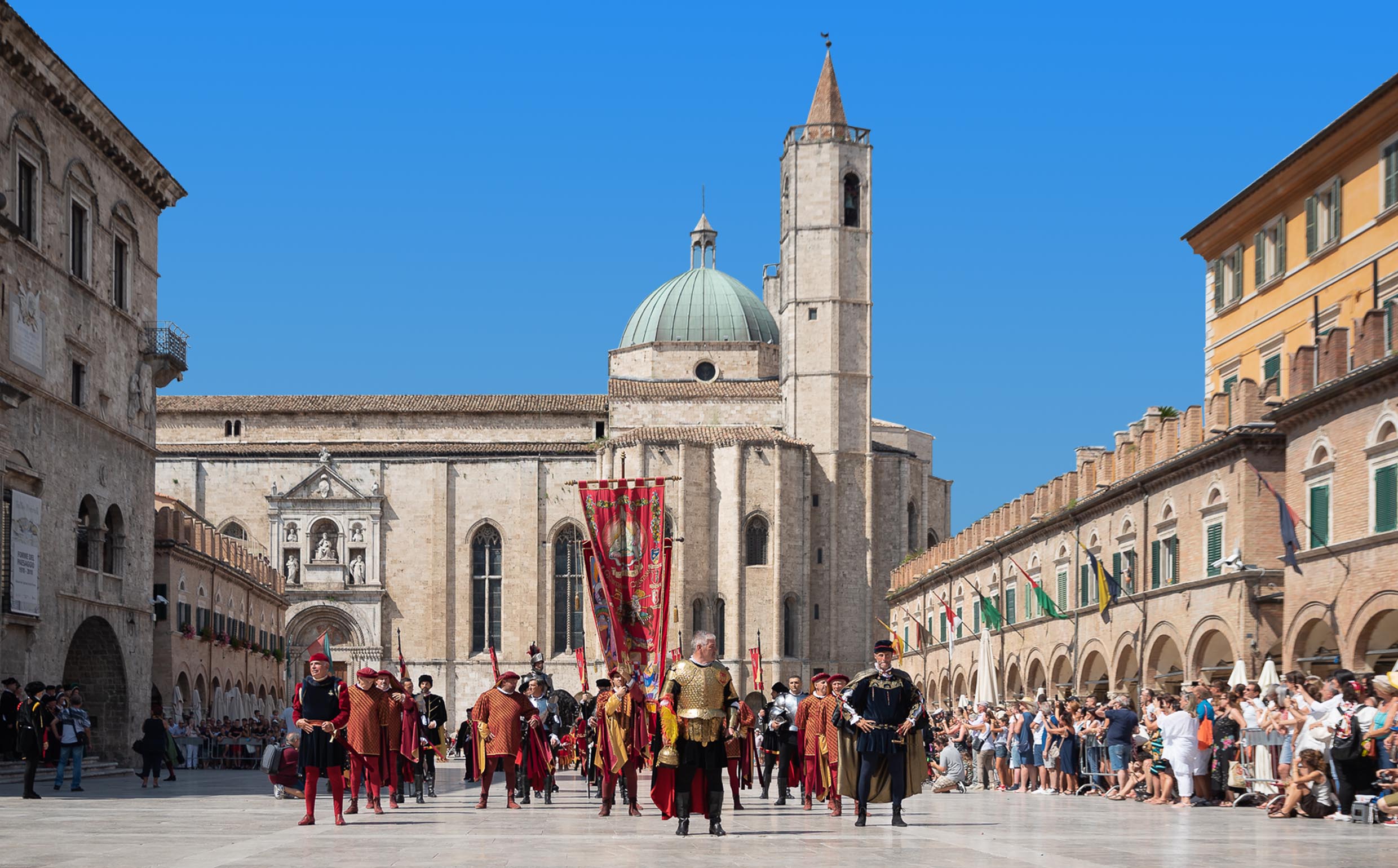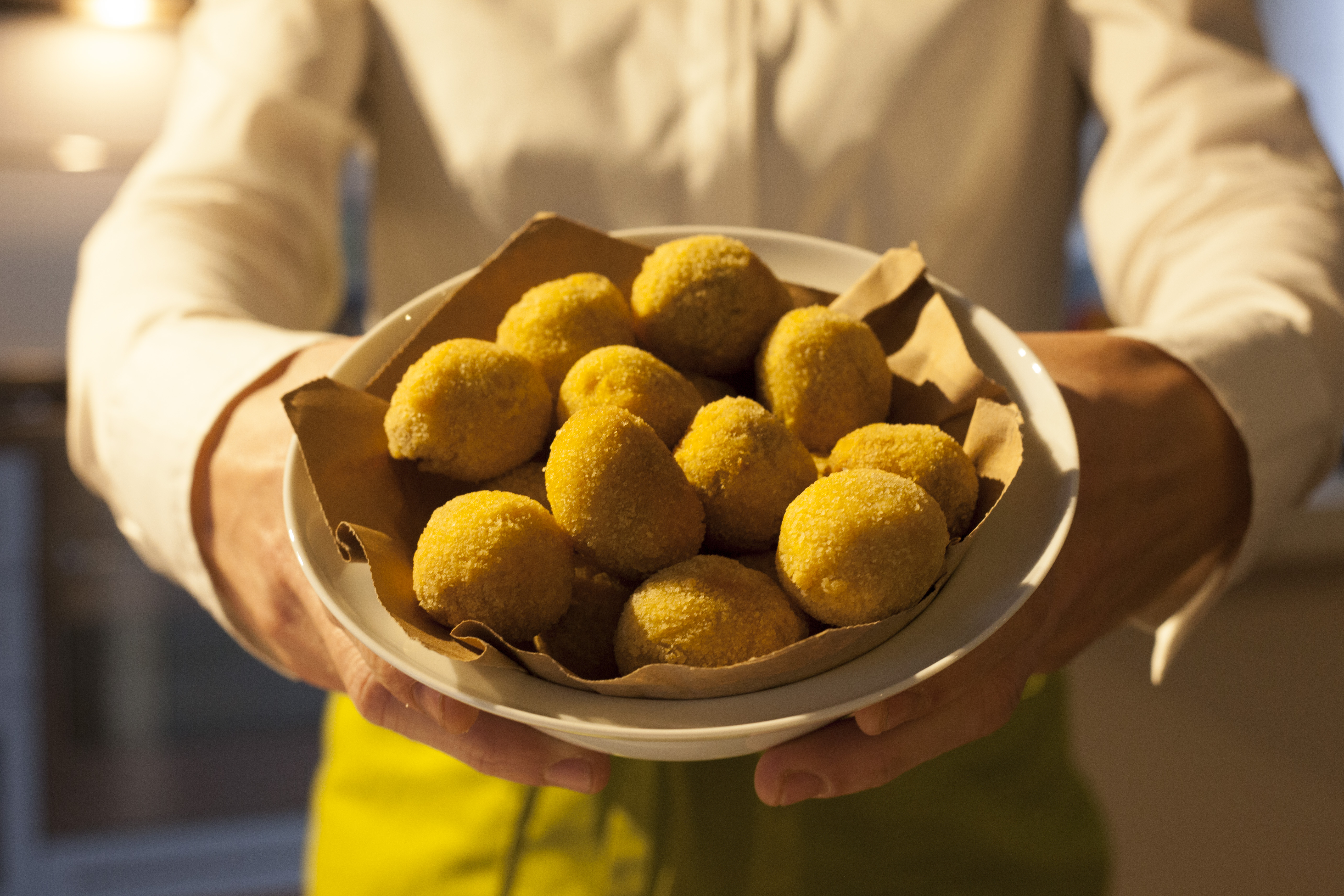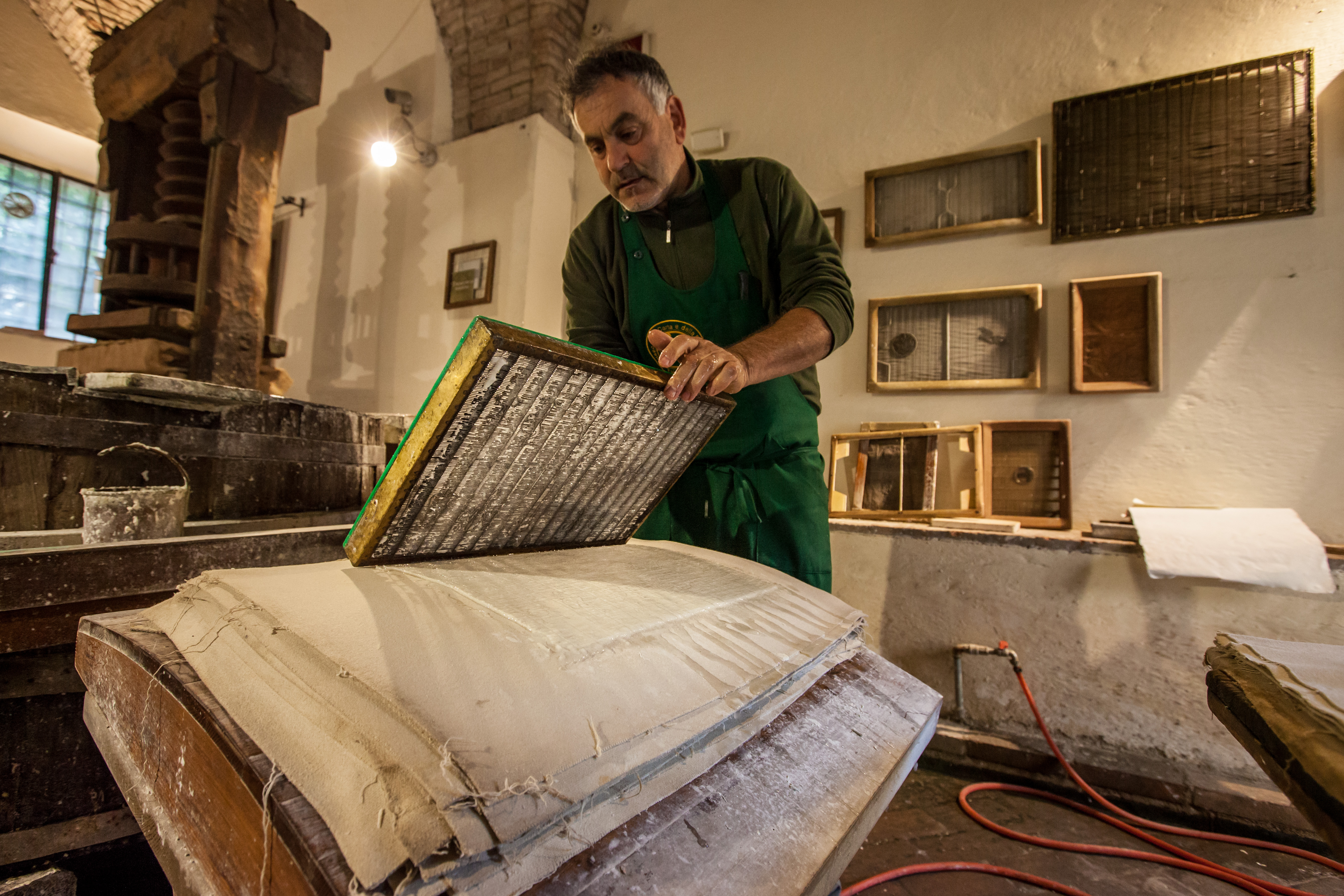Ancient Villages - Marche Tourism
Ancient Villages
Index
Exploring the centuries-old, hilltop ancient villages of Le Marche forces any visitor to slow down and savor their charm. They are places filled with art, history, traditions and friendly people who welcome visitors warmly. 32 villages have been awarded the most beautiful villages of Italy by the National Association of Italian Municipalities. After visiting villages, tourists can discover majestic castles and fortress spread throughout the region, such as the Francesco di Giorgio Martini Fortress in the heart of the Montefeltro area, the Offagna Fortress, the Albornoz Fortress in Sassoferrato and the magnificent Della Rovere Fortress in Senigallia. The Marche inland villages can also boast further prestigious award: the Orange Flag, the Authentic Village and the Green Flag.
-
The Orange Flags
The Touring Club Italiano has now awarded 28 of its prestigious "Orange Flag" awards to Marche inland towns (Acquaviva Picena, Amandola, Apecchio, Camerino, Cantiano, Cingoli, Corinaldo, Frontino, Frontone, Genga, Gradara, Mercatello sul Metauro, Mondavio, Montecassiano, Montelupone, Monterubbiano, Morrovalle, Offagna, Ostra, Ripatransone, San Ginesio, San Severino Marche, Sarnano, Serra San Quirico, Staffolo, Urbisaglia, Valfornace, Visso). The Bandiere Arancioni are given to small inland municipality across Italy in recognition of the quality of what they offer the tourist while not sacrificing the environment. They must meet certain requirements, including hospitality, events, etc.
-
The Most Beautiful Villages of Italy
“I Borghi più belli d’Italia” (the club of the most beautiful villages of Italy) is a club including Italy's important art and historical towns. The club was created in 2001 by the National Association of Italian Communes and aims at protecting, preserving and revitalizing small urban centres, either towns or villages, which are recognized of great importance. To join the club, a town must meet the following requirements: integrity of the urban area, architectural harmony, high standards of quality of life, artistic and historical quality of both private and public buildings, good public services. The club organizes several events in the villages such as festivals, exhibitions, fairs, meetings and concerts to enhance and promote the artistic, cultural and historical heritage as well as the best local wines and food. The inhabitants of villages, associations, schools and local artists are directly involved in the events.
31 towns of the Marche Region are members of the Association “I Borghi più belli d’Italia” (the club of the most beautiful villages of Italy):
Arcevia, Cingoli, Corinaldo, Esanatoglia, Fiorenzuola di Focara di Pesaro, Frontino, Gradara, Grottammare, Macerata Feltria, Mercatello sul Metauro, Mondavio, Mondolfo, Monte Grimano Terme, Montecassiano, Montecosaro, Montefabbri di Vallefoglia, Montefiore dell’Aso, , Montelupone, Monteprandone, Moresco, Morro d'Alba, Offagna, Offida, Pergola, Petritoli, San Ginesio, Sarnano, Sassoferrato, Servigliano, Treia, Visso. -
Green Flags
The “Green Flag Agriculture” is a recognition that rewards farms, regions, provinces, municipalities, mountain communities and parks for their good policies of protection of the environment, the rational use of land and the valorisation of typical products also for tourism purposes.
-
Camerino and Da Varano Lordship
The Da Varano family ruled Camerino from the mid thirteenth century until 1539. During the Giulio Cesare da Varano’s rule (1464-1502), Camerino enjoyed a flourishing period. He showed his grandeur in his military enterprises. There are actually many fortresses surrounding Camerino and its neighbourhood: the Fortress Borgesca (Camerino), the Fortress Varano (Sfercia di Camerino) the Fortress Aiello (Castelraimondo), the Castle of Lanciano (Castelraimondo) and Beldiletto (Pievebovigliana).
The Fortress Borgesca was built in 1503 upon Cesare Borgia’s orde, to protect the western slopes of the hills where the town stood; it still retains two towers and the keep.
The fortress was separated from the town by a precipice that was bridged using an arduous drawbridge. The Fortress Varano,
built in the early twelfth century, was the fortified residence of the Da Varano family. It features much of its original structure: the white limestone entrance; the majestic underground building with barrel vaults, connecting the two wings of the fortress and probably overlooked by rooms and small towers; the low tower in the eastern corner and the adjoining building. Today, after careful restoration, the Fortress Varano of Camerino has rooms for permanent exhibitions and hosts the Exhibition Centre of the Artigianato Artistico (“artistic handicraft centre”).
The name of the Fortress Aiello, built in 1382, derives from the Latin “agellum”, meaning “small field”: in fact, the fortress is located at about 400 m. above sea level on a hill that dominates the surrounding landscape. Giovanni da Varano promoted the construction of the Castle Lanciano and oversaw, in particular, the building of the intagliata, a distinctive 12-km trench dug in the ground and filled with trees to protect the north-eastern border of Camerino. Giulio Cesare Varano gave the castle to his wife Giovanna who restored it around 1489, transforming it into a castle-residence in the Renaissance style. It now houses the museum “Maria Sofia Giustiniani Bandini”.
The Castle of Beldiletto, built between 1371 and 1381, is squareshaped and has corner towers. Inside is a courtyard with arcade, with octagonal pillars and round pointed arches in red and white stone. The remains of a vast cycle of frescoes depicting knights are to be seen in the castle’s largest room, evoking the literary The Da Varano family ruled Camerino from the mid thirteenth century until 1539. During the Giulio Cesare da Varano’s rule (1464-1502), Camerino enjoyed a flourishing period. He showed his grandeur in his military enterprises. There are actually many fortresses surrounding Camerino and its neighbourhood: the Fortress Borgesca (Camerino), the Fortress Varano (Sfercia di Camerino) the Fortress Aiello (Castelraimondo), the Castle of Lanciano (Castelraimondo) and Beldiletto (Pievebovigliana).
The Fortress Borgesca was built in 1503 upon Cesare Borgia’s orde, to protect the western slopes of the hills where the town stood; it still retains two towers and the keep.
The fortress was separated from the town by a precipice that was bridged using an arduous drawbridge. The Fortress Varano, built in the early twelfth century, was the fortified residence of the Da Varano family. It features much of its original structure: the white limestone entrance; the majestic underground building with barrel vaults, connecting the two wings of the fortress and probably overlooked by rooms and small towers; the low tower in the eastern corner and the adjoining building. Today, after careful restoration, the Fortress Varano of Camerino has rooms for permanent exhibitions and hosts the Exhibition Centre of the Artigianato Artistico (“artistic handicraft centre”).
The name of the Fortress Aiello, built in 1382, derives from the Latin “agellum”, meaning “small field”: in fact, the fortress is located at about 400 m. above sea level on a hill that dominates the surrounding landscape. Giovanni da Varano promoted the construction of the Castle Lanciano and oversaw, in particular, the building of the intagliata, a distinctive 12-km trench dug in the ground and filled with trees to protect the north-eastern border of Camerino. Giulio Cesare Varano gave the castle to his wife Giovanna who restored it around 1489, transforming it into a castle-residence in the Renaissance style. It now houses the museum “Maria Sofia Giustiniani Bandini”.
The Castle of Beldiletto, built between 1371 and 1381, is squareshaped and has corner towers. Inside is a courtyard with arcade, with octagonal pillars and round pointed arches in red and white stone. The remains of a vast cycle of frescoes depicting knights are to be seen in the castle’s largest room, evoking the literary. -
Arcevia and castles of Arcevia
Arcevia stands high up on a ridge in the Apennine foothills of central Marche. The town boasts the imposing 13th century walls: you can walk along stretches of the battlements and admire the sweeping views. Today the rests of the original walls are a few towers and four gates. The most interesting buildings in the old town are: the Baroque Collegiate Church of San Medardo, which houses masterpieces by Luca Signorelli, works by Della Robbia, Gian Battista Salvi and Claudio Ridolfi; Misa theatre, an architectural jewel built between 1840 and 1845 in the Palazzo dei Priori, and the Church of St. Agata; the cultural center of San Francesco, housed in a Franciscan convent boasting a Renaissance cloister and a beautiful church. The State Archaeological Museum collects a significant archaeological finds in the area of Arcevia. The grave goods found in Gallic necropolis of Montefortino (IV century BC - III century BC) are gorgeous. Among the main attractions of Arcevia are the nine castles : Avacelli, Castiglioni, Caudino, Loretello, Montale, Nidastore, Palazzo, Piticchio, San Pietro. These walled villages retain their original plan dating back to 14th and 15th century.
-
The Vallesina and the castles of Jesi
Jesi is the main town of the area crossed by the Esino river, from Serra San Quirico to Rocca Priora, near Falconara Marittima. Featuring the backdrop of the peak of Monte San Vicino, the valley is surrounded by sloping hills topped by ancient fortified villages. Jesi is the birthplace of the Emperor Frederick II of Swabia and of the composer Giambattista Pergolesi; it boasts a belt of massive 14thC walls, strengthened with square, polygonal and cylindrical towers and curtains crowned by corbels. In Piazza Federico II, where Hohenstaufen Emperor Frederick II was born in a tent, there is the Cathedral of San Settimio. Palazzo della Signoria, built by Francesco di Giorgio Martini in elegant Renaissance style, houses Planettiana library and the Municipal Archives. The Pergolesi Theatre, built between 1791 and 1796, dominates Piazza della Repubblica. On parallel Via XV Settembre stands Jesi's most flamboyant building, Palazzo Pianetti, housing sugar-candy stucco work in the long galleria and a group of some of Lorenzo Lotto’s finest works.
Near Jesi there is a large number of historic hill villages, surrounded by walls and housing art treasures. They are the so-called "Castelli di Jesi": Belvedere Ostrense, Castelbellino, Castelplanio, Cupramontana, Maiolati Spontini, Mergo, Monsano, Montecarotto, Monte Roberto, Morro D'Alba, Poggio San Marcello, Rosora, San Marcello, San Paolo di Jesi, Santa Maria Nuova, Serra de 'Conti, Serra San Quirico, Staffolo.
The whole area is well-known for Verdidcchio wine, made from the local grape with the same name.
Verdicchio wine is one of Marche’s most famous DOC wines ; Verdicchio Castelli di Jesi Riserva wine is also recognized as DOCG. Lacrima di Morro D'Alba DOC wine, made in Morro d'Alba’s area , is among the most outstanding Marche’s red wines.
From Jesi you can set out on many excursions to discover the area, full of charming villages, ancient churches and abbeys, museums and wine cellars. -
Federico da Montefeltro and The Montefeltro and Della Rovere residences
The towns and landscape of the northern Marche Region are still marked by the cultural activity of Federico da Montefeltro over five hundred years ago (Gubbio, June 7, 1422 - Ferrara, September 10, 1482). He was an Italian troop commander, mercenary captain of fortune and famous Renaissance lord, Count of Montefeltro, Urbino and Castel Durante; he ruled over many other places, rising to the rank of Duke of Urbino from 1474 until his death. He deployed the huge profits from his military campaigns to maintain a splendid court, to set up one of the period’s most famous libraries and to reinforce the military defence of his state, by building and renovating fortresses and castles.
Piero della Francesca was one of the artists who worked at Federico’s court, and he played a leading role in that area: recent research has shown that his paintings still portrait the actual Montefeltro landscapes, that can be seen wandering among the hills and valleys of the Metauro and Marecchia rivers. Federico assigned to the Sienese architect and military engineer Francesco di Giorgio Martini the task of implementing his defensive construction projects and, in doing so, Francesco deeply changed the traditional conception of military engineering, marking the landscape over the centuries.His most famous achievement is the Ducal Palace in Urbino, a splendid example of civil architecture. He built the Ducal Palace in nearby Urbania, with the beautiful spiral ramp inside the cylindrical tower. The Fortress of Fossombrone was transformed by Martini into a complex fortress, with the inclusion of the imposing “caput carenato” or ravelin fortification structure. The Fortress Montecerignone preserves its ancient medieval structure, alongside the typically Renaissance elements introduced by Martini. The Ubaldinesca Fortress of Sassocorvaro, still fully intact, combines robust military construction with the typical features of the aristocratic residence. At Sassocorvaro, Martini refined the prototype of the circular fortress, whose main function was to deflect the stone balls shot from the bombard cannon. In Frontone there is also a fortress designed by Martini, whose shape resembles a ship’s prow. The Fortress Mondavio is a remarkable stronghold, with its keep on polygonal foundations, and the typical series of trap doors and battlements.
During the Della Rovere family’s lordship, the Marche Region enjoyed a flourishing period. The Fortress of Gradara, created as a military stronghold on bordering lands from the twelfth century, was transformed into a noble residence by the powerful families that succeeded one another in ruling the territory, including the Della Rovere. Lucrezia Borgia and Francesca da Rimini stayed at the castle. This was probably the location of the tragic love story between Paolo and Francesca, told by Dante Alighieri in his Divina Commedia. The Sforza Castle of Pesaro, known as Villa Imperiale, was transformed in 1530 at the behest of the Della Rovere family, and the Palazzo Nuovo (“New Palace”) was added, renowned for its beautiful interiors filled with frescoes.
Senigallia boasts its fifteenth century Fortress Roveresca, a model military fortification typical of lowland strongholds. It was built in 1450 by Giovanni della Rovere, who became lord of Senigallia in 1474. -
Authentic Villages
The association Authentic Villages of Italy is a system of territories and communities, scattered across Italy, that aims at improving both the quality of life of people living in towns and at protecting the environment. The Local Community, that cares for healthy life, food and tradition, opens to tourists, called "temporary citizens", and becomes an Hospitable Community. Every year the association organizes the National Day of Authentic Villages with wine, food and crafts markets, conferences and live music. The contest "From village to village" is particularly interesting; it aims at promoting the image of Authentic Villages of Italy, through stories, videos and photographs.
6 towns of the Marche Region are members of the Association: Carassai, Magliano di Tenna, Monte Rinaldo, Montedinove, Monteleone di Fermo and Rotella.
